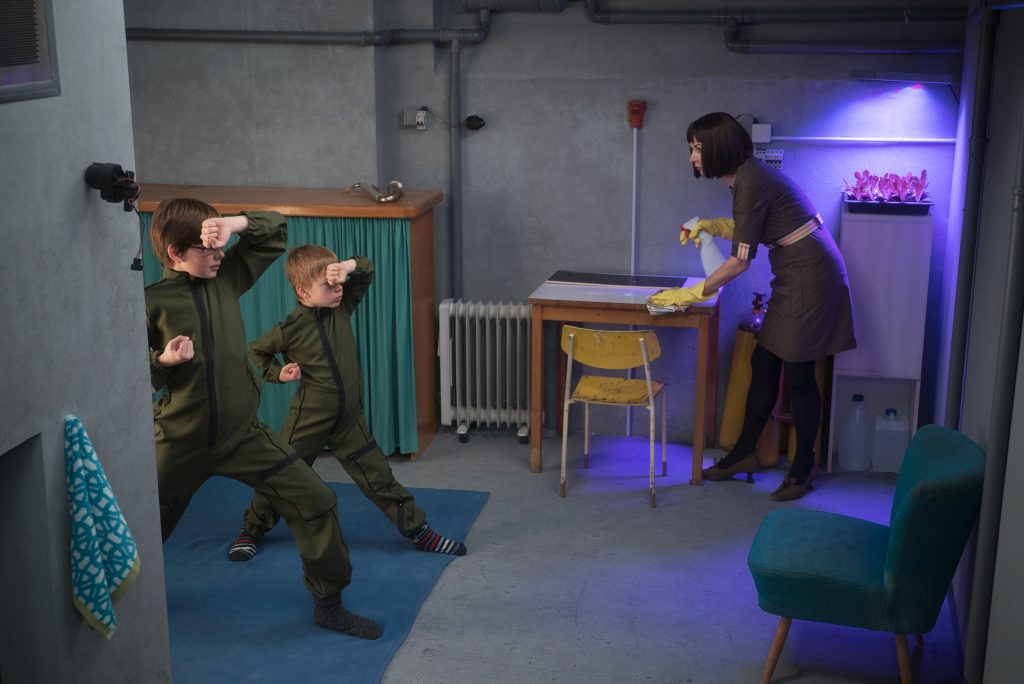Video Art Programme:
Veronika Veit “Bunker” 2017

Veronika Veit, Bunker, FullHD Film, 12 min, 2017, Film still, photo: Stephan Vorbrugg
The video work Bunker provides an insight into the strictly structured everyday life of an isolated family with father, mother and two children. Only through extreme hygiene and absolutely regimented behaviour does it seem possible to maintain control in a confined space. Conversation is held in Latin. They listen to classical music. What the Munich artist Veronika Veit (*1968) brings to the fore in 2017 is the increasingly lived dream of individuality and self-determination, which in some parts of society strives for a separation from the majority. Veit takes this neoliberal desire ad absurdum. She shows that this attitude ultimately leads to appalling social isolation.
In the meantime, reality has caught up with the utopia of art through the Corona crisis. In 2020, we became acutely aware of how quickly community can tip over into isolation. Signs that four years ago could still be read as criticism of an affluent society have turned into inner and outer distress during the pandemic. While Veit wanted to stir up and provoke, her work reflects extreme situations under the conditions of the recent past, ranging from everyday life in a bunker during the World War II to life under pandemic conditions. Will the sense of community that is essential for survival cease afterwards?
The work Bunker was originally closely related to its first venue on the grounds of the Munich Gasteig. During the World War II, the deep bunker LSB12 was located here, and next to today’s concert hall, the Munich Bürgerbräukeller. This is where the Hitler putsch took place in 1923 and the attempted assassination by Georg Elsner in 1939.
Veronika Veit (*1968), lives and works in Munich. Veit studied sculpture at the Academy of Fine Arts in Munich from 1989 to 1995. For her objects, sculptures and installations, some of which she combines with computer animation and sound effects, she was awarded the Bavarian State Prize for Fine Arts in 2006. While Veit dealt with everyday objects in her earlier works, posing the art-historical question of the relationship between image and object, in her more recent multimedia installations she focuses on people. She traces similarities and differences, insecurities, poses or peculiarities. Since 2010, she has been making video films whose stories initially seem amusing and entertaining. Behind them, however, lurks a dangerous, sometimes unconsciously violent interaction between people.

